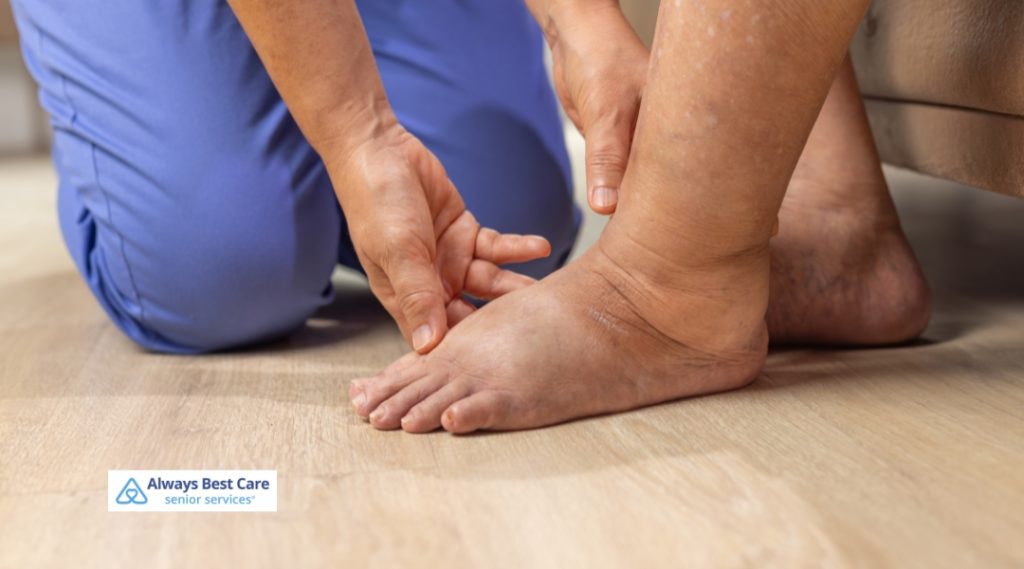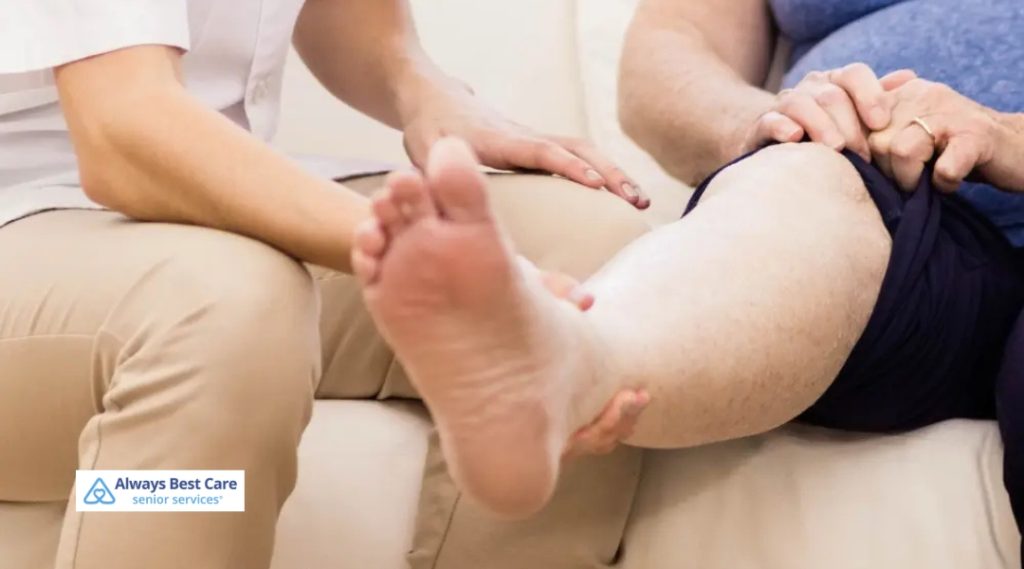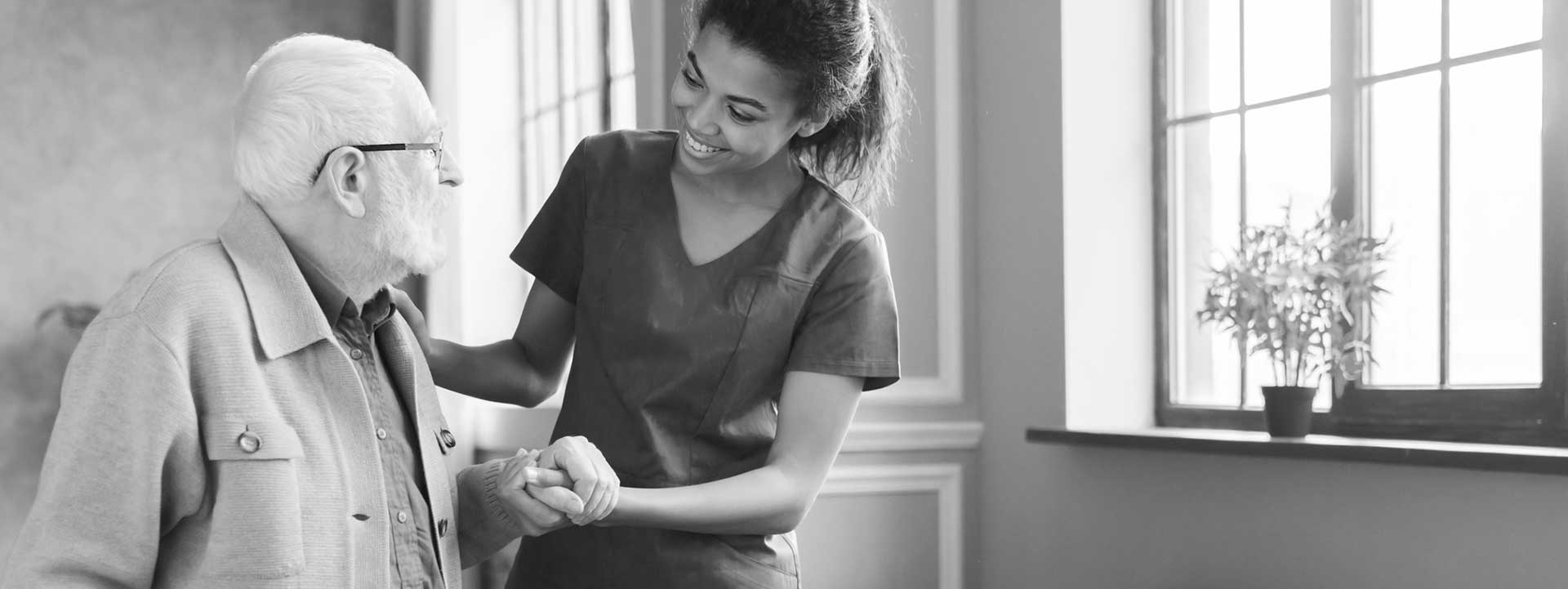Is It Time to See a Podiatrist? Key Foot Health Warnings for Seniors in Wake Forest

Life keeps us on our toes—literally. But as the years add up, our feet start to show the mileage. For seniors, even a minor ache can quickly snowball into a real problem if ignored.
Here at Always Best Care of Wake Forest, we’re big believers that happy feet mean a happier, more independent life.
So, how do you know when it’s time to call in a podiatrist? Let’s break it down, plain and simple.
What you will learn:
- The importance of senior foot health and the common issues that affect aging feet.
- Key warning signs that indicate it’s time to see a podiatrist include swelling, pain, and balance issues.
- How Always Best Care of Wake Forest helps seniors maintain healthy feet with daily checks, hygiene support, and fall prevention.
- Tips for preventing foot problems, such as daily foot inspections, proper footwear, and good hygiene practices.

Table of Contents
Why Senior Foot Health Can’t Be Ignored
Feet are marvels of engineering, each with 26 bones, 33 joints, and a web of muscles, tendons, and nerves. As we age, a few things start to work against us:
- Circulation slows down—making healing take longer
- Skin gets thinner, increasing the risk of cuts and infections
- Chronic conditions—like diabetes or arthritis- put extra strain on our feet
Neglecting foot health isn’t just uncomfortable—it can put a real dent in independence, leading to infections, falls, and a loss of mobility. Trust us, that’s a slippery slope nobody wants.
Top Warning Signs: When to See a Podiatrist in Wake Forest
Not sure when to pick up the phone? Here are the big red flags you shouldn’t brush off:
1. Persistent Swelling
- Occasional puffiness is common, especially after a long day.
- If one foot or ankle stays swollen, or the swelling is severe, it could point to circulation problems, heart issues, or even an infection.
2. Foot Pain That Won’t Quit
- Some pain after activity is normal, but if it lingers for days or keeps you from doing the things you love, don’t just “walk it off”.
- Conditions like plantar fasciitis, arthritis, or even a hidden fracture could be to blame.

3. Numbness or Tingling
- That “pins and needles” feeling—or worse, total numbness—shouldn’t be ignored.
- This is especially true for folks with diabetes, as neuropathy can sneak up and cause injuries you might not even notice.
4. Sores or Wounds That Refuse to Heal
- Any cut, blister, or ulcer that sticks around for more than a few days is a big warning sign.
- For seniors with diabetes, these wounds can go from zero to serious infection in no time flat.
5. Funky Skin or Nail Changes
- Watch for thick, yellowed nails, stubborn fungus, or cracked heels.
- Discoloration, redness, or swelling could signal infection or other problems that need a professional’s eye.
6. Difficulty Walking or Sudden Balance Issues
- If walking feels like a chore, or you’re suddenly unsteady, don’t chalk it up to “just getting older.”
- Changes in gait or balance could point to underlying foot problems.
How Always Best Care of Wake Forest Keeps Seniors on Their Feet
We know a thing or two about keeping seniors moving. Here’s how we support healthy feet every day:
- Daily foot checks: Our caregivers look for blisters, cuts, swelling, and other red flags.
- Assistance with hygiene: We help with washing, drying, and moisturizing—no more awkward bending.
- Safe footwear choices: Making sure shoes and socks fit well to prevent problems before they start.
- Fall prevention: Steadying seniors as they walk and flagging any balance changes.
- Coordinating podiatrist visits: Need a ride or a reminder? We’ve got it covered.

Prevention Tips That Make a Real Difference
An ounce of prevention is worth a pound of cure. Here’s what we recommend:
- Check feet daily for any changes.
- Keep feet clean and dry.
- Wear shoes that fit (no more “breaking them in”).
- Clip nails straight across.
- Speak up about any pain or changes—no complaint is too small.
FAQ: When to See a Podiatrist in Wake Forest
Q: How do I know if a foot problem is serious?
A: If you notice swelling, ongoing pain, numbness, open sores, or changes in color or shape, it’s time to call a podiatrist.
Q: Is foot pain just a normal part of aging?
A: Nope! While some aches are common, persistent pain is your body’s way of saying something’s wrong.
Q: Can Always Best Care help with podiatrist appointments?
A: Absolutely. We can help schedule, remind, and provide safe transportation to your appointments.
Q: What about people with diabetes?
A: Diabetics should check their feet daily and see a podiatrist right away for any cuts, sores, or changes—they’re at higher risk for complications.
Q: What should I bring to my first podiatrist visit?
A: Bring a list of symptoms, current medications, and any relevant medical history for the best care.

Keep Your Feet Moving: Learn When to Consult a Podiatrist in Wake Forest!
Don’t let foot trouble trip you up. At Always Best Care of Wake Forest, we believe every senior deserves the freedom to move comfortably and confidently. If your feet—or the feet of someone you love—are sending out warning signals, don’t wait.
Reach out to us today to schedule a care consultation, and let’s take the first step together toward better foot health and peace of mind.





